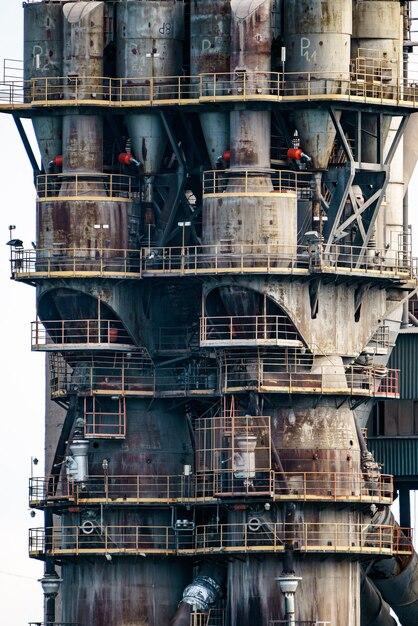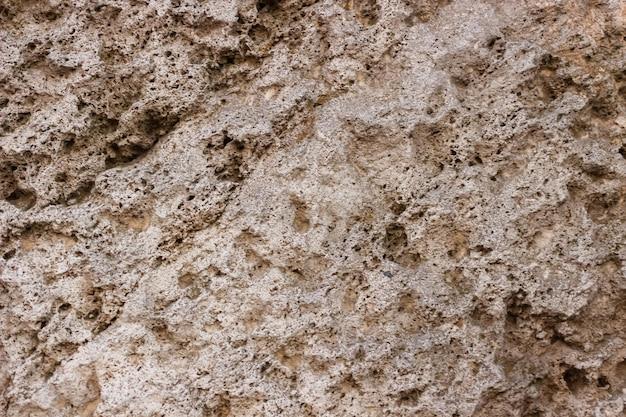Limestone, a versatile sedimentary rock, has found its way into various industries and applications due to its unique properties. One such industry that extensively utilizes limestone is the iron and steel sector. In this blog post, we will delve into the role of limestone in blast furnaces, its contribution to iron extraction, and address common queries around its usage.
Iron extraction plays a crucial role in the production of steel, a vital material in various construction and manufacturing processes. Blast furnaces are the primary method employed for the extraction of iron from its ore, known as hematite. And in this process, limestone takes center stage.
But why is limestone specifically chosen for blast furnace applications? What is its purpose in this highly significant extraction process? And does limestone pose any risks or challenges when used in construction? We will explore all these questions and more, providing you with a comprehensive understanding of the role limestone plays in blast furnaces.
So, if you’re curious to know the significance of limestone in iron extraction and its various applications, join us as we uncover the secrets behind this fascinating rock.

Why Limestone Rocks in Blast Furnaces!
A Marvelous Mix of Minerals
Limestone, the secret ingredient that makes blast furnaces go boom (in the best possible way), has been a game-changer in the world of iron production. You see, this fantastic rock plays a critical role in transforming raw iron ore into the sturdy steel that builds bridges, skyscrapers, and those giant dinosaur statues your weird neighbor has in his backyard.
The Not-So-Secret Recipe
Now, let’s dive into the science of why limestone is used in blast furnaces. Hold onto your lab coats, folks! When limestone (also known as calcium carbonate) is heated up to a sizzling 900–1200°C (1652–2192°F), it breaks down into two magnificent substances: calcium oxide (quicklime) and carbon dioxide.
Calcium Oxide: The Star of the Show
First on stage is calcium oxide, ready to rock the blast furnace world. This superstar compound reacts with impurities in the iron ore, such as silica and alumina, forming a gang of slaggy sidekicks. These slag buddies help separate the impurities from the molten iron, ensuring cleaner and purer steel. It’s like having a team of crime-fighting superheroes in your furnace!
Carbon Dioxide: The Sneaky Escape Artist
While calcium oxide is stealing the spotlight, carbon dioxide quietly makes its exit, adding a touch of humor to the whole process. As the carbon dioxide bubbles away into the atmosphere, it says, “Goodbye, my fellow gas friends! I’m off to contribute to global warming. Catch you later!”
Taming the Fire-Breathing Furnace Dragon
Now, you may be wondering, “Why use limestone when you could just sprinkle fairy dust instead?” Well, my curious friends, limestone brings stability to the fiery furnace dragon. You see, as the limestone decomposes, it liberates carbon dioxide, which creates a protective layer of gas above the molten iron. This gas shield acts as the furnace’s cuddly blanket, preventing any unwanted reactions with oxygen from turning our precious iron into a rusty mess!
Limestone: The Unsung Hero of Steel
So there you have it, folks. Limestone may not wear a flashy cape or have a catchy theme song, but it’s the unsung hero of blast furnaces. Without limestone, producing iron and steel would be as challenging as trying to eat ice cream with a feather. So next time you pass a mighty steel structure, take a moment to appreciate the humble limestone’s magical touch, turning rocks into riches since time immemorial.
Blasting the competition, one limestone rock at a time!

FAQ: Why is limestone used in blast furnace
Welcome to our comprehensive FAQ-style guide on why limestone is used in blast furnaces. We’ll answer the most burning questions you have about the role of limestone in iron extraction, its impact on health and building, and its significance in the steel and toothpaste industries. Let’s dive right in!
What is the role of limestone in iron extraction
Limestone plays a vital role in iron extraction by acting as a flux material. When added to the blast furnace, limestone helps remove impurities from the iron ore, making it easier to extract pure iron. The limestone combines with acidic impurities, forming a molten substance called slag that floats on top of the molten iron. As a result, cleaner and more refined iron is obtained.
Can limestone cause cancer
Fear not! Limestone does not cause cancer. In fact, it’s a naturally occurring sedimentary rock that has been used for centuries without any evidence of harmful effects on our health. So, no need to fret about your limestone countertops or flooring. They’re perfectly safe and stylish!
Why is limestone used in blast furnace
Ah, the million-dollar question! Limestone is used in blast furnaces because of its amazing properties. Firstly, it helps control the temperature inside the furnace. The high calcium carbonate content in limestone decomposes when heated, releasing carbon dioxide. This reaction absorbs heat, preventing the furnace from overheating.
Additionally, limestone acts as a flux, aiding in the removal of impurities from the iron ore. It forms a slag that floats on top of the molten iron, facilitating the separation process. So, limestone is like the superhero sidekick in the blast furnace, ensuring efficient iron extraction!
Is it okay to build a house on limestone
Absolutely! Building a house on limestone is perfectly fine, and in some regions, it’s quite common. Limestone is a strong and durable rock that can provide a stable foundation for your home. Just make sure you consult with a geotechnical engineer to assess the specific conditions and ensure proper construction techniques are employed. With a solid limestone foundation, your house will stand strong for years to come!
Is limestone used in steel
Yes, indeed! Limestone is an essential ingredient in the steelmaking process. It is added during the production of steel as a fluxing agent, helping to remove impurities and making it easier to manufacture high-quality steel. So, next time you see a towering skyscraper or a gleaming bridge, remember that limestone played its part in making it possible!
Is limestone used in toothpaste
You bet! Limestone is commonly used in toothpaste, albeit in a slightly different form known as “precipitated calcium carbonate” or PCC. PCC is derived from limestone and serves as a mild abrasive and polishing agent in toothpaste. It helps remove stains and plaque, leaving your pearly whites sparkling and your dentist impressed!
What is limestone used to build
Limestone is an incredibly versatile building material. Its attractive appearance, durability, and ease of carving make it a popular choice for a variety of applications. From majestic monuments and historic buildings to beautiful facades and elegant flooring, limestone is widely used in construction. It adds a touch of timeless elegance to any architectural masterpiece!
Is limestone bad for building
Not at all! Limestone is actually excellent for building. Its strength, durability, and resistance to weathering make it a reliable choice for construction projects. However, as with any building material, it’s important to consider the specific conditions and consult professionals to ensure proper installation and maintenance. When done right, limestone can be your building’s best friend!
What is the purpose of limestone
Ah, the multifaceted purpose of limestone! As we’ve discovered, limestone plays a crucial role in various industries, including iron extraction, steel production, construction, and even oral hygiene. Its versatility is a result of its unique properties, making it a reliable and diverse rock. So, whether it’s purifying iron, strengthening structures, or polishing your smile, limestone is there, silently contributing to our everyday lives.
We hope this comprehensive FAQ-style guide shed some light on why limestone is used in blast furnaces and its various other applications. Limestone truly proves that rocks can be both robust and versatile. If you have more questions, feel free to explore our blog for further insights. Stay curious and rock on!
